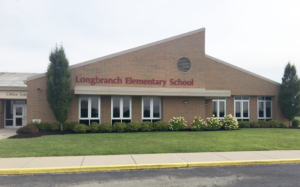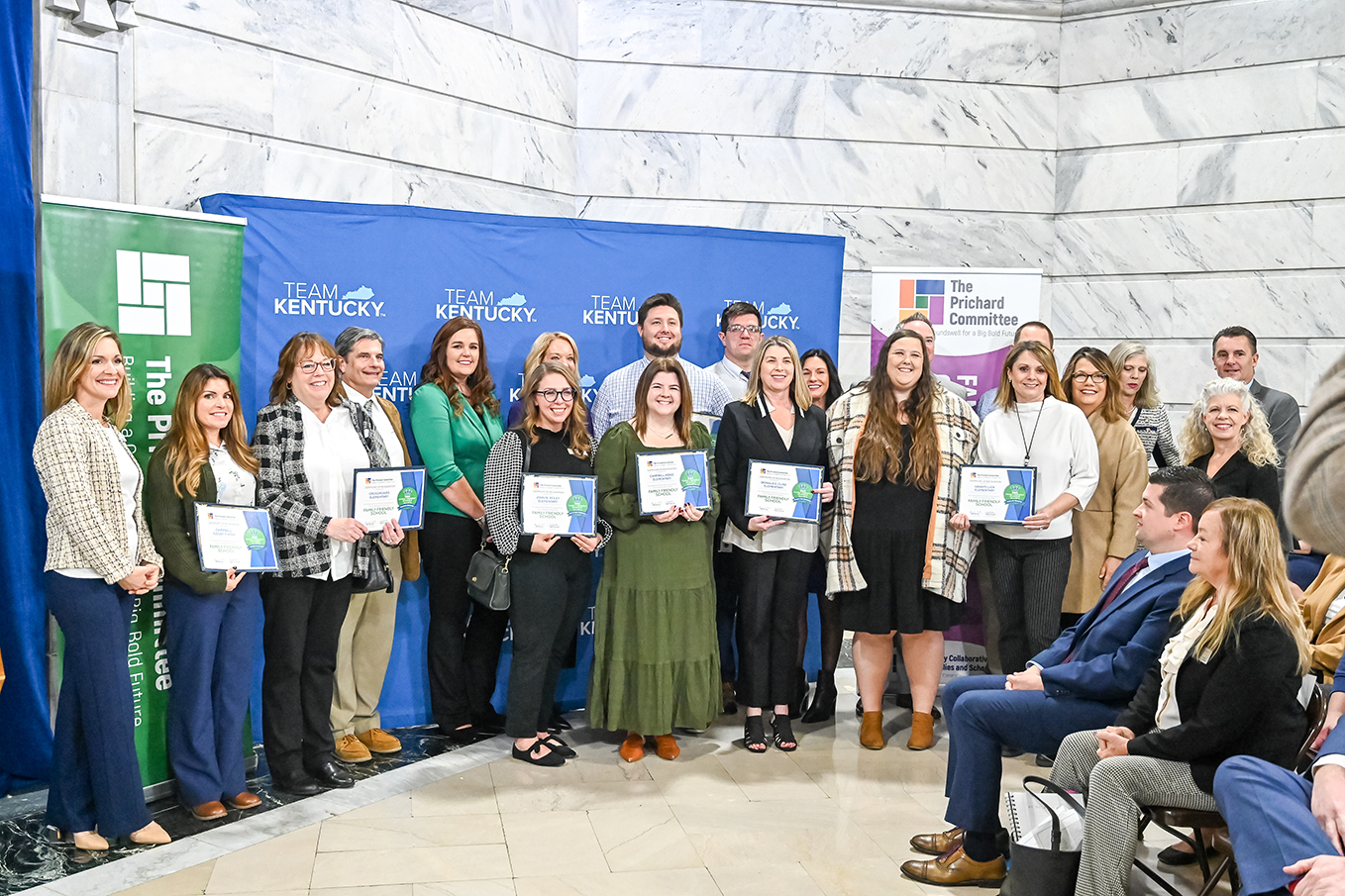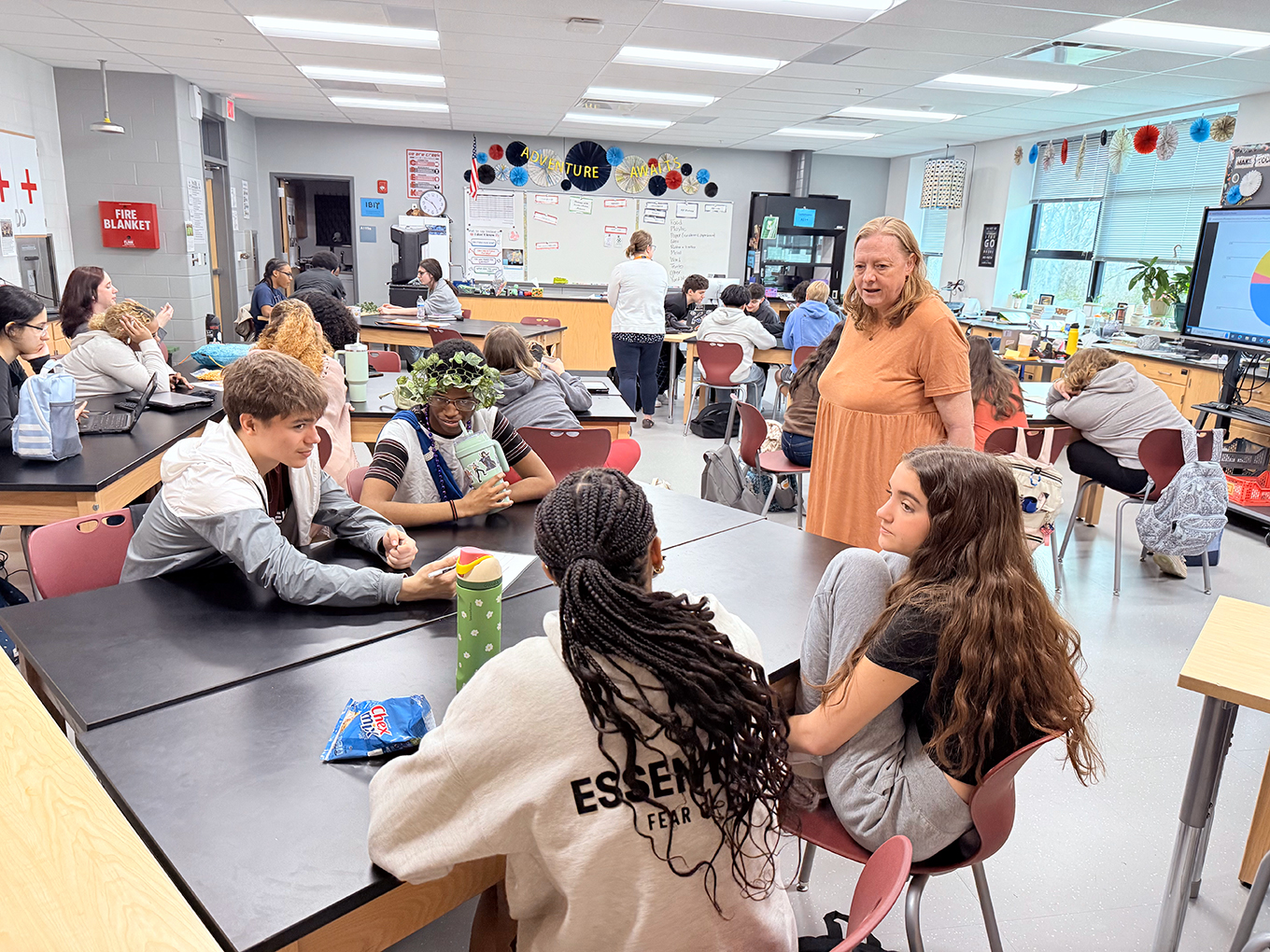When classmate Sophia lost her life to cancer during the 2016-17 school year, the students and teachers at Longbranch Elementary School (Boone County) grieved with her family. In the midst of their sorrow, they felt a need to do something to help.
Sophia’s loss became a powerful purpose when the students and teachers decided to pass her wish forward to help another child battling cancer treatment. Sophia had wanted nothing more than to swim with her favorite mermaids, which the Make-A-Wish Foundation made happen for her and her family at a resort in Florida.

Longbranch Elementary School
Principal Erika Bowles suggested to the school’s project-based learning/technology teacher, Melanie Roberts, that perhaps Longbranch could fund a wish for Make-A-Wish, a nonprofit that grants wishes for critically ill children. The seed was planted for a really big idea.
Roberts and the school’s music teacher, Regina Melvin, sprang into action. They and their students chose their school play as a way to help the community heal and give back. Partnering with the Make-A-Wish Foundation, in conjunction with the school’s production of Disney’s “The Little Mermaid Jr.,” students raised money for another local girl with cancer who has a wish similar to Sophia’s.
Since Longbranch Elementary is a Leader in Me school, it was natural for students to take significant ownership of the project. The program teaches students leadership and life skills and is founded on the idea that every child can be a leader. Our school also practices service learning and project/passion-based pedagogies that empower student voice and choice within their learning experiences.
The teachers found ways to integrate content with the play through the classroom projects. Students applied science, art, drama, dance, language arts and economics concepts expected for their grade level in various project-based ways. As a result, performance measures, implementation and assessments were carried out uniquely in each classroom as part of each class’ work plans.
For instance, 3rd-graders were studying ocean habitat and ocean animals in science. Their culminating work, including dioramas, was displayed during play performances. Volunteer 4th- and 5th- graders developed public speaking and performance skills to audition for roles in the play.
Ellen Steele’s 5th-grade STEAM (Science, Technology, Engineering, Arts and Mathematics) class was studying the chemistry and composition of suspensions and solutions. Her students made and sold slime to the entire school. They, as well other student groups, made items to sell in “Sophia’s Market” during the performance intermissions. The slime microenterprise profits and Sophia’s Market sales were added to the play revenue, which was given – along with donations received from the larger community – to fund another child’s wish.
A leadership team of 24 students led the play project, coordinating auditions, creating props, helping with costumes and designing sets. Another group of students used their Chromebooks to design the playbill, while a third group acknowledged the assistance provided by members of the community by writing thank you notes to the business that invested in the project. Throughout their studies and project work, students developed 21st century work skills, including collaboration, critical thinking, creativity and communication for authentic purposes.
The play had huge support from school families, students from other schools and the community at large. Randall Cooper High School and Conner High School students helped during the practices and performances, and even videotaped the performances. Students at other district elementary schools helped out too. One student from Burlington Elementary school hosted a lemonade stand and Burlington Elementary students and teachers took up a collection and donated to the cause. Businesses also pitched in, with Apex Realty even funding the initial cost of the rights to the play. At least one local church took up a collection for the cause.
Longbranch students were heavily involved in all of the decision-making, even deciding how much to charge for admission to the play. The leadership team seriously debated how much to charge. The ultimate group decision was to accept any donation people wished to give. At last count, Longbranch students and teachers had raised more than $19,000 for the Make-a-Wish Foundation.
The key components of every service learning experience are reflection and demonstrating depth of learning and personal impact. Throughout this experience, students were reflecting upon the process of learning new knowledge, skills and attitudes. As teachers, we participated in reflective evaluation as well.
We, like all teachers, felt the pressure of time. All of this project was completed in a very short time frame in the final two months of school. We recommend allowing up to a 5-month time frame from initial planning to completion. This allows classroom teachers time to integrate project elements within their units of study, students to have time to engage in the investigation, planning and reflection processes, while also allowing our leadership team’s work within the play production.
Although the child whose wish we funded is still in treatment for her cancer, she and her family now have the opportunity to visit Disney World to meet with her favorite princesses, including Ariel. In fact, Longbranch Elementary and the extended community raised enough money that another child’s family also will have a wish granted in the near future.
Ultimately, the project’s gifts were truly reciprocal. Longbranch students and teachers benefited by connecting learning with compassion. One might view this type of project as a capstone unit, in which students integrate the arts and multiple core content lessons to demonstrate new skills, knowledge, and social and emotional development.
Our Kentucky schools are teaching all the core subjects. Schools can aim even higher with service learning and project-based learning by intentionally developing each student’s individual strengths, practicing skills that prepare them for fulfilling careers. This project to help one sick child demonstrated how integrating academics with critical thinking, creativity and compassion for others nurtures vibrant, engaged student citizens that will be better prepared for success in life.
Mary Kay Connolly has been director of service learning and a service learning consultant at Children Inc. since 2005. She is a member of the Greater Cincinnati Service Learning Network Executive Committee as well as the chair of the K-12th Grade Subcommittee for the network. Previously, Connolly was a school counselor and taught several grades as a classroom teacher.
Melanie Roberts is a project-based learning and technology teacher and coordinator at Longbranch Elementary (Boone County). She has taught kindergarten through 5th grade throughout her 28 years of teaching. She holds a bachelor’s and master’s degrees in elementary education from Northern Kentucky University. Roberts has been trained by The Buck Institute in project-based learning.
Regina Melvin holds a bachelor’s and master’s degree in music education from the University of Kentucky. She has taught elementary and preschool music for 25 years. Melvin is a member of the American Orff-Schulwerk Association, the Kentucky Orff-Schulwerk Association, the Kentucky Music Educators Association and the National Association for Music Education.




Leave A Comment